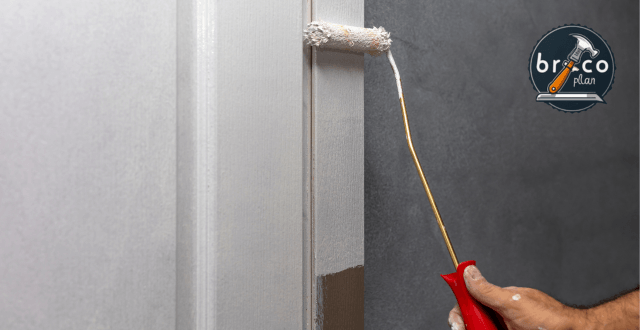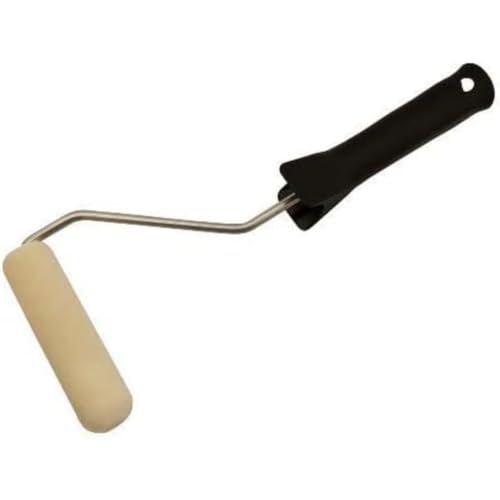
The Best Roller for Lacquering Doors for a Professional Finish
From experience, I can tell you that when it comes to lacquering doors, the final finish is key to transforming a space and giving it a professional touch. But what happens if you don't choose the right tools? The wrong roller can leave marks, bubbles, or an uneven result. In this article, I'll guide you through choosing the best roller for lacquering doors and share techniques for achieving a flawless finish.
As a Project Advisor at Leroy Merlin, I often meet with clients who want to replace their old doors. In many cases, after observing that the doors are of good quality, I suggest lacquering them instead of replacing them. This option is not only much more economical, but also allows them to take advantage of high-quality materials that simply need a facelift.
Why choose the right roller for lacquering?
Lacquering is a task that requires precision. The type of roller you use directly influences the finish.
Choosing a quality paint roller not only guarantees professional results, but also makes the job easier.
Benefits of a good lacquer roller
- Reduces marks and bubbles.
- Save time and effort.
- Provides a smooth, even finish.
Types of rollers for lacquering doors
When choosing a roller, you should consider the surface material, the type of lacquer, and the technique you plan to use. Here's a list of the most recommended types of rollers for painting with lacquer:
Compact foam roller
- Ideal for lacquers and enamels.
- Extra smooth finish.
- Recommended for smooth doors.
High-density microfiber rollers
- They retain paint better.
- Perfect for slightly uneven surfaces.
Short-pile roller
- Designed for gloss and satin lacquers.
- They provide a flawless finish.
Advice: If you're just starting out, try a foam roller to avoid common mistakes when lacquering doors.
How to lacquer a door without leaving marks?
Following a proper technique for lacquering doors is just as important as the paint roller you use. Here's how to lacquer or paint a door without leaving streaks, step by step:
- Prepare the surface
- Lightly sand the door to remove any imperfections.
- Wipe with a damp cloth to remove dust and grease.
- Apply a primer
- This helps the lacquer adhere better and ensures an even finish.
- Load the roller correctly
- Avoid overloading the roller with too much paint. Remove the excess into a tray.
- Paint in small sections
- Start at one end and move to the other with smooth, even strokes.
- Repeat if necessary
- Apply a second coat after the first is completely dry.
Best-Selling Door Lacquers
Pros and Cons of Roller for Lacquering Doors
| Pros | Contras |
|---|---|
| Professional finish without marks. | Slightly higher price. |
| Easy to clean and reuse. | Not suitable for very rough surfaces. |
| Compatible with water-based and synthetic lacquers. | It requires a little practice for beginners. |
| Uniformity in the finish. | Reduced durability if used incorrectly. |
| Versatile and suitable for various surfaces. | Dependence on the quality of the lacquer used. |
Comparison of Rollers for Lacquering Doors
| Model | Material | Price | Valuation |
|---|---|---|---|
| Foam Rollers | Compact foam | 9-12 € approx. | 4,3 ⭐⭐⭐⭐ |
| Microfiber Rollers | Microfiber | 7-10 € | 4,1 ⭐⭐⭐⭐ |
| Short Pile Rollers | Velvet | 6-11 € | 4,4 ⭐⭐⭐⭐ |
FAQs – About Rollers for Lacquering Doors
What roller size is ideal for lacquering doors?
And 10 to 15 cm rolling pin is perfect to efficiently cover door surfaces.
Can any type of paint be used with foam rollers?
Yes, foam rollers work well with lacquers and enamels, both water-based and synthetic.
What to do if the roller leaves bubbles on the surface?
Check the amount of paint applied; avoid overloading the roller and applies even pressure.
Is it better to use a brush or a roller to paint doors?
The roller is preferable for an even finish, while the brush it is useful for details or corners.
Should the door be sanded before lacquering?
Yes, light sanding is essential to remove imperfections and improve lacquer adhesion.
How many coats of lacquer are recommended?
Personally, I recommend 3 coats for a perfect finishGenerally, two thin coats are recommended.
How to clean rollers after lacquering?
Use specific solvents or soapy water, depending on the type of lacquer used.
Conclusion
Lacquering doors is an economical and effective solution for updating spaces without spending a fortune on new doors. Choosing the right paint roller is key to achieving a professional finish, and with the right techniques, you can completely transform the look of your home. If you're considering lacquering your doors, don't hesitate to try the recommended types of rollers and follow the detailed steps for a flawless result.
Lacquer rollers are useful for painting doors, furniture and windows.
Let's get to work!
Complementary entries
- Paint Gun: The Ultimate Guide to Painting Like a Pro
- The Secrets of How to Paint Like a Professional
- Best Exterior Wood Paints: The Ultimate Guide
- How to Install a Sliding Door Step by Step
- DIY Trends 2025: Materials, Styles, and Projects
- The Best Power Tools for Beginners
- The 6 Best Tool Brands – Complete Guide
- The 5 Best Smart Locks: The Ultimate Guide











